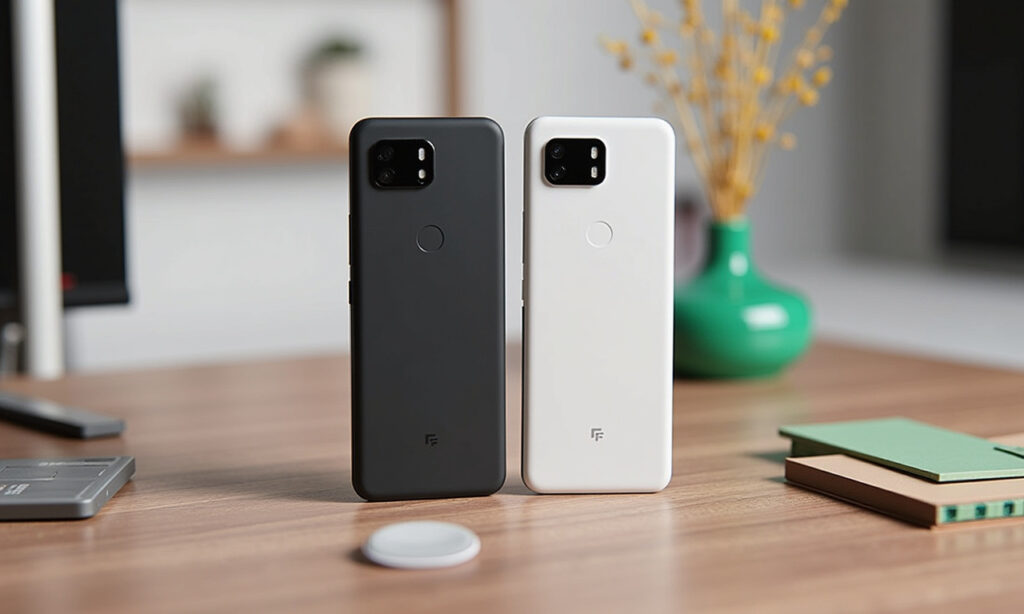The Google Pixel A-series has long been a favorite among those seeking premium features at an affordable price. With the release of the Pixel 9a, Google has introduced several significant upgrades that set it apart from its predecessor, the Pixel 8a. Here’s a detailed look at what differentiates these two mid-range powerhouses.
Hardware: A New Design Language
The Pixel 9a marks a significant shift in design for the A-series. Gone are the soft corners and the camera bar of the Pixel 8a; instead, the 9a adopts a flat design language similar to its siblings in the Pixel 9 series. This change gives the 9a a more contemporary and sleek appearance, devoid of any camera bump or protrusion[2][4].
Display
One of the most noticeable upgrades is the larger and brighter display. The Pixel 9a boasts a 6.3-inch pOLED screen, compared to the 6.1-inch OLED screen of the Pixel 8a. This newer display not only offers a larger viewing area but also peaks at 2,700 nits of brightness, significantly outshining the Pixel 8a’s 2,000 nits. Both displays feature a 120Hz refresh rate, but the 9a’s screen is notably brighter, especially in HDR mode, making it more suitable for indoor and outdoor use[1][2][5].
Battery and Charging
Battery life is another area where the Pixel 9a excels. With a 5,100mAh battery, it surpasses the Pixel 8a’s 4,492mAh cell by nearly 600mAh. This larger battery, combined with 23W wired charging (up from the 18W on the Pixel 8a), ensures that the 9a can last longer and charge faster[2][3][5].
Durability
The Pixel 9a also enhances durability with an IP68 rating for dust and water resistance, improving upon the Pixel 8a’s IP67 rating. This upgrade means the 9a can withstand more challenging environmental conditions[2][3].
Software: The Latest and Greatest
Operating System
The Pixel 9a ships with Android 15 out of the box, while the Pixel 8a launched with Android 14, though it is upgradable to Android 15. This means the 9a benefits from the latest software features and security updates right from the start. Both phones are promised seven years of OS and security updates, ensuring long-term support[2][3][5].
AI and Camera Features
The software on both phones is largely identical in terms of core functionality, but the Pixel 9a benefits from some exclusive AI-powered features. These include Macro Focus, Astrophotography, and the Add Me feature for enhanced group shots. Additionally, the 9a has access to Pixel Studio and Reimagine, further enriching the camera experience[1][2][5].
Battery Life: A Significant Boost
Historically, the A-series has been known for its solid battery longevity, and the Pixel 9a continues this trend with a substantial improvement. The larger 5,100mAh battery and faster 23W charging make the 9a a better choice for those needing a phone that can last all day and charge quickly when needed[2][3][5].
Camera: Beyond Megapixels
At first glance, the Pixel 8a’s 64MP main camera might seem superior to the Pixel 9a’s 48MP sensor. However, the 9a’s camera benefits from a larger aperture, a wider field of view, and a Dual Pixel system with improved autofocus. The Tensor G4 chip also brings enhancements to HDR processing and overall image quality, despite the smaller sensor size. The ultra-wide and selfie cameras remain identical on both models, but the 9a introduces new features like auto Macro Focus and enhanced group shot capabilities[1][2][5].
Pixel 9a vs. Pixel 8a: Are There Enough Upgrades?
Upgrading Considerations
For those already using the Pixel 8a, the question of whether to upgrade to the Pixel 9a is a valid one. While the 9a offers several significant upgrades, including a better display, improved battery life, and new camera features, these may not be compelling enough reasons to upgrade immediately. However, for those looking to purchase a new phone or upgrading from an older A-series model, the Pixel 9a is undoubtedly the better choice.
Prospective Buyers
The Pixel 9a represents a tonal shift for the A-series, moving away from being just a cheaper alternative to the base model. It now stands as a distinct and capable mid-range option with its own set of strengths. The design changes, improved internals, enhanced camera system, and superior display make the 9a a much better phone than its predecessor. If you’re in the market for a new mid-range device, the Pixel 9a is certainly worth considering[2][4].
In conclusion, the Pixel 9a is a robust upgrade to the A-series lineup, offering a more refined design, better performance, and enhanced camera capabilities. Whether you’re a seasoned user or a new buyer, the Pixel 9a is a solid choice that embodies the best of Google’s mid-range offerings.
